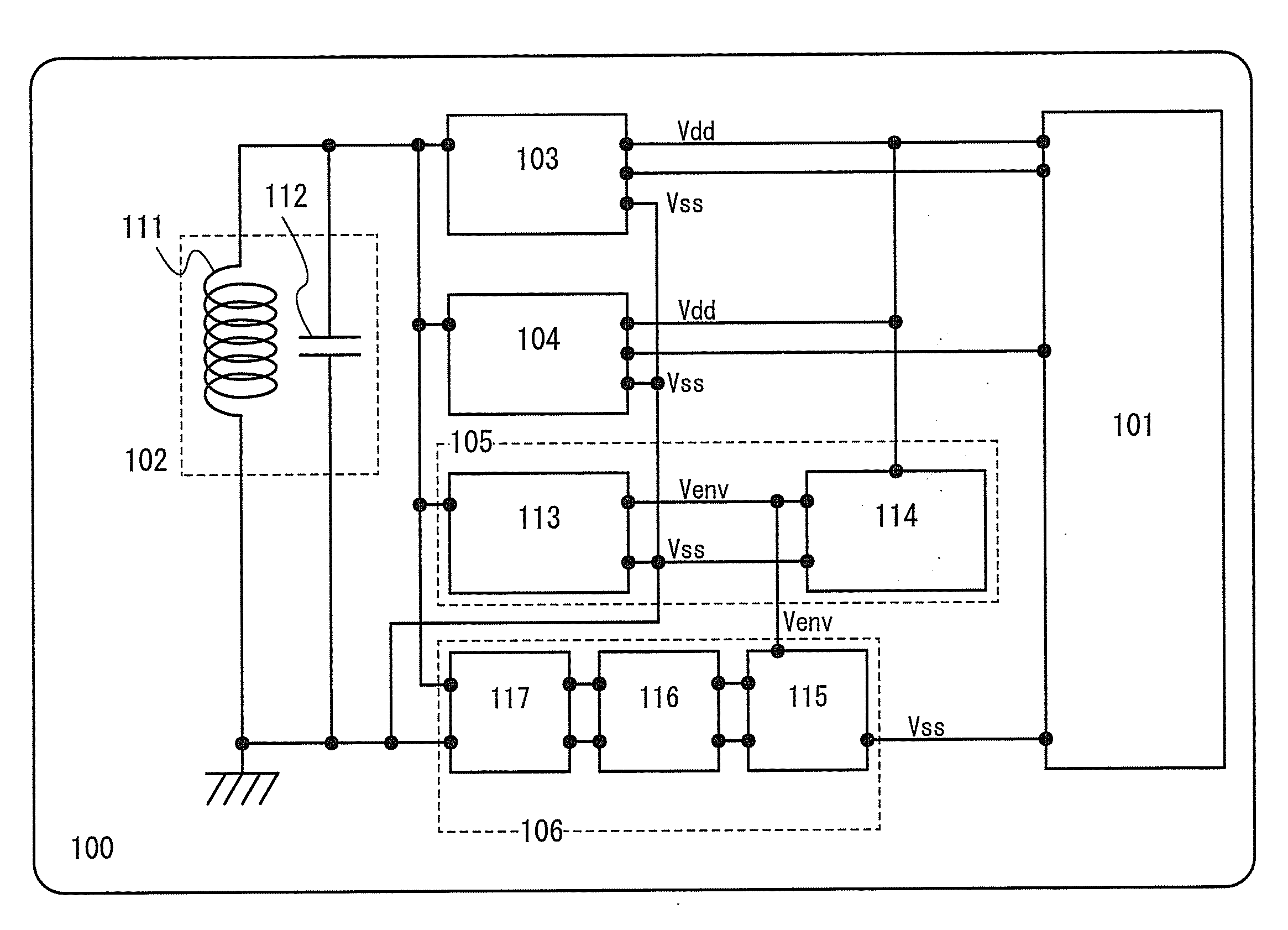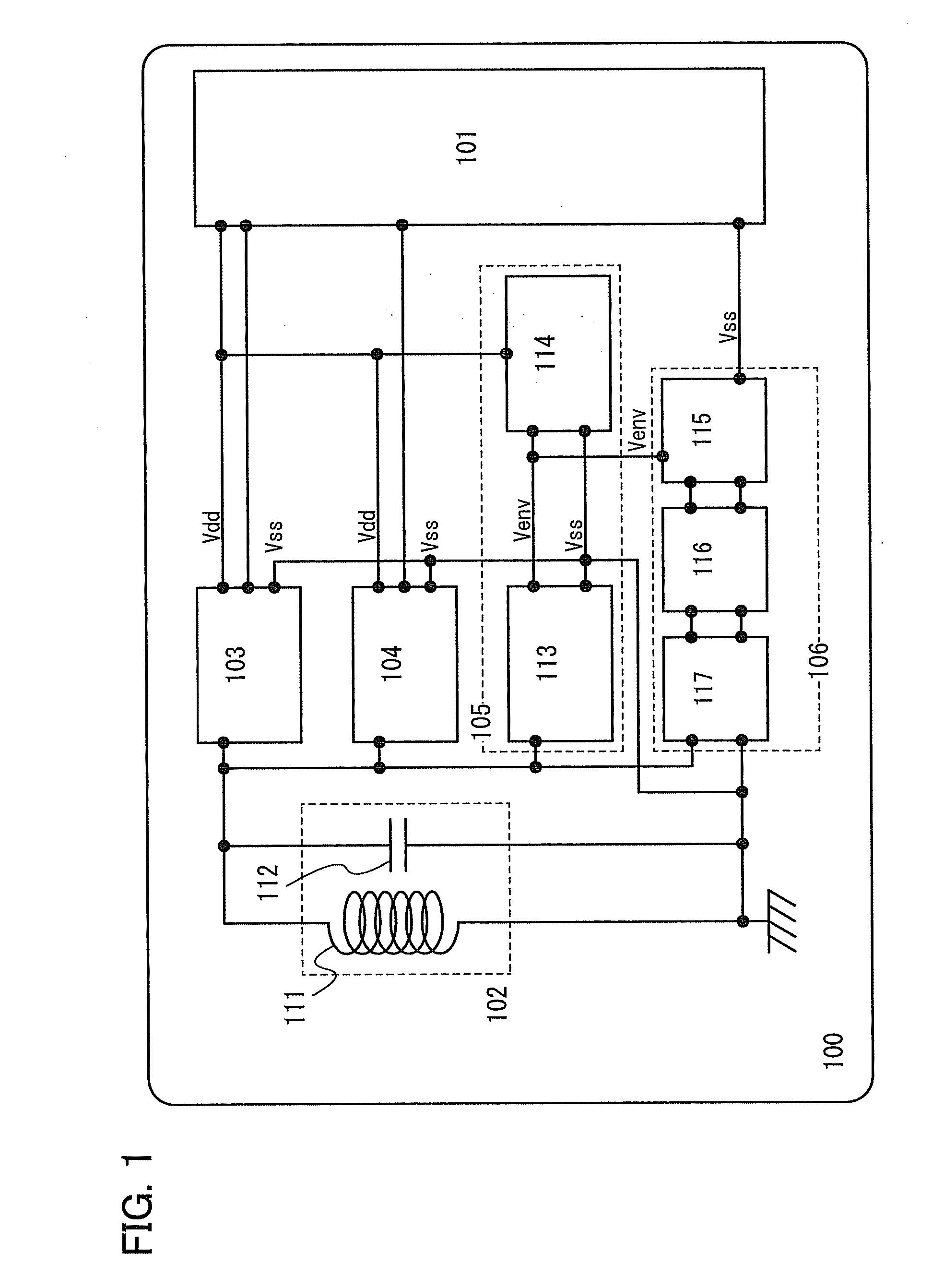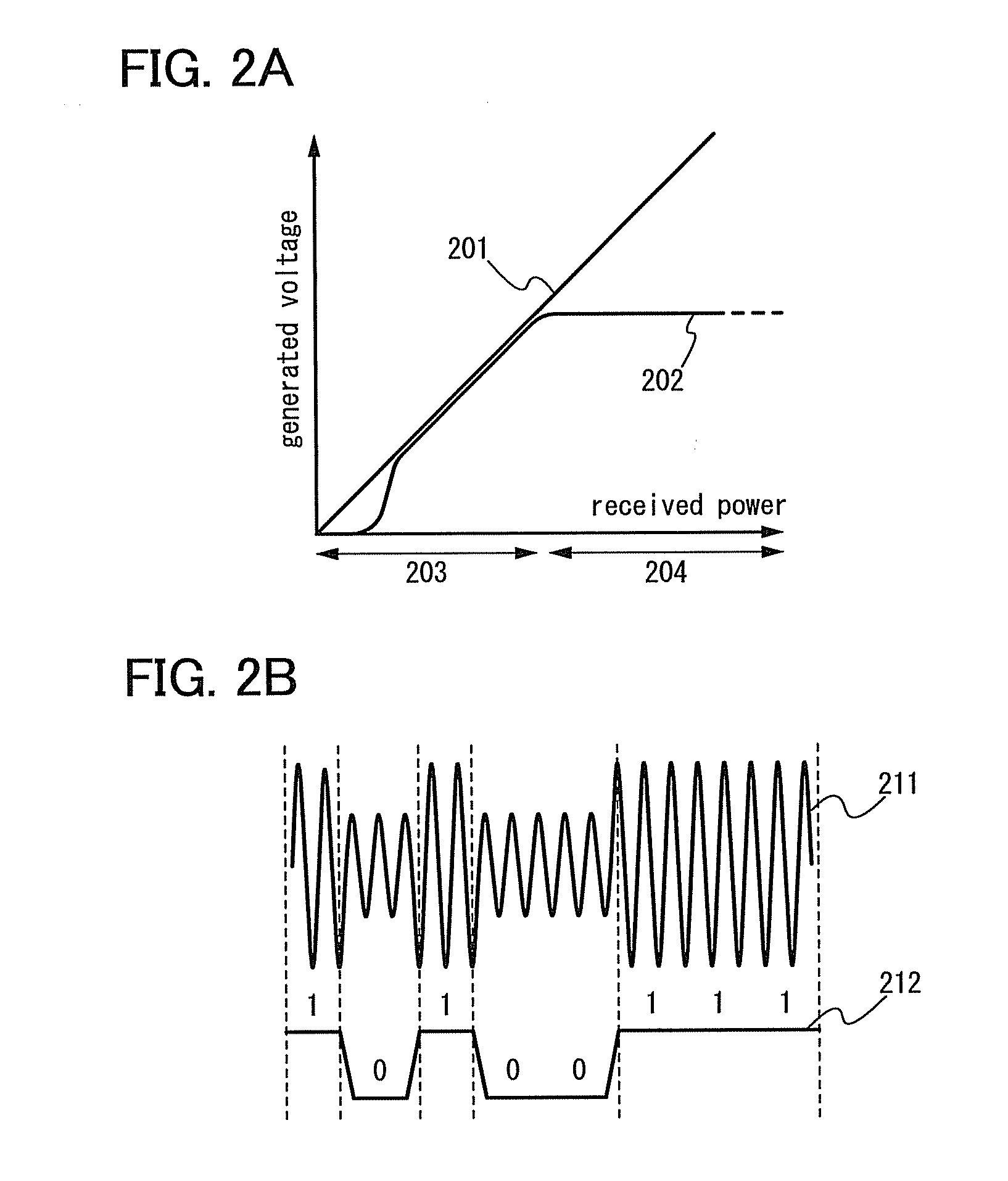Semiconductor Device and Wireless Tag Using the Same
a technology of semiconductor devices and wireless tags, applied in emergency protective arrangements, instruments, and emergency protection arrangements for limiting excess voltage/current, etc., can solve problems such as communication errors between r/w and wireless tags, noise input to signals, and large influence of antennas on transmitting and receiving signals
- Summary
- Abstract
- Description
- Claims
- Application Information
AI Technical Summary
Benefits of technology
Problems solved by technology
Method used
Image
Examples
embodiment 1
[0037]Embodiment 1 of the present invention will be described with reference to FIG. 1.
[0038]FIG. 1 is a block diagram of a wireless tag according to an embodiment of the present invention, and a wireless tag 100 includes: a logic circuit 101 for performing functional processing such as generating a response signal based on received data; an antenna circuit 102 for transmitting and receiving signals to / from a R / W; a demodulation circuit 103 for demodulating an amplitude modulation wave which is received by the antenna circuit 102 and extracting a pulse signal; a modulation circuit 104 for modulating the response signal which is output from the logic circuit 101 and converting the modulated signal into a signal which is transmitted to the R / W; a power supply circuit 105 for generating a DC voltage from a carrier wave or the amplitude modulation wave which is received by the antenna circuit 102; and an overvoltage protection circuit 106 according to an embodiment of the present invent...
embodiment 2
[0071]In this embodiment, one example of a method for manufacturing the semiconductor device described in the above embodiment is described.
[0072]First, a separation layer 1202 is formed over one surface of a substrate 1201. Then, an insulating film 1203 serving as a base and a semiconductor film 1204 (for example, a film containing amorphous silicon) are formed (see FIG. 12A). The separation layer 1202, the insulating film 1203, and the semiconductor film 1204 can be formed consecutively. By forming consecutively, they are not exposed to the air so that impurities can be prevented from being contained therein.
[0073]As the substrate 1201, a glass substrate, a quartz substrate, a metal substrate, a stainless steel substrate, a plastic substrate that can withstand the treatment temperature of the process described here, or the like can be used. When such a substrate is used, area and shape thereof are not restricted so much; therefore, by using a rectangular substrate with at least on...
embodiment 3
[0106]In this embodiment, a method for manufacturing a semiconductor device with higher reliability and high yield is described with reference to FIGS. 9A to 9D. In this embodiment, a CMOS (complementary metal oxide semiconductor) is described as an example of the semiconductor device.
[0107]Transistors 902 and 903, a capacitor 904, and an insulating layer 905 are provided over a formation substrate 900 with a separation layer 901 interposed therebetween, and a semiconductor integrated circuit 910 is formed (see FIG. 9A).
[0108]The transistors 902 and 903 are thin film transistors, and each include source and drain regions, a low-concentration impurity region, a channel formation region, a gate insulating layer, a gate electrode, and a source electrode or a drain electrode. The source and drain regions are in contact with wirings serving as source and drain electrodes, respectively, and electrically connected thereto.
[0109]The transistor 902 is an n-channel transistor, and includes an...
PUM
 Login to View More
Login to View More Abstract
Description
Claims
Application Information
 Login to View More
Login to View More - R&D
- Intellectual Property
- Life Sciences
- Materials
- Tech Scout
- Unparalleled Data Quality
- Higher Quality Content
- 60% Fewer Hallucinations
Browse by: Latest US Patents, China's latest patents, Technical Efficacy Thesaurus, Application Domain, Technology Topic, Popular Technical Reports.
© 2025 PatSnap. All rights reserved.Legal|Privacy policy|Modern Slavery Act Transparency Statement|Sitemap|About US| Contact US: help@patsnap.com



